Cities of Turkmenistan
Turkmenistan is situated in the very heart of Central Asia, between the Caspian Sea in the west and the great Amu Darya in the east; from Aral Sea coastal steppes in the north to the Kopet Dag mountain range to the south. Turkmenistan is an independent state, founded in 1991 after the disintegration of the USSR; five years later it attained a unique political status, which was recognized by the United Nations Organization. The founder of the state and former National leader of Turkmenistan, President Saparmurat Turkmenbashy, has clearly specified the character of his country and its place in the sophisticated geopolitical space with a broad formulation of "permanent neutrality".
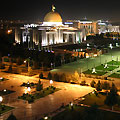 |
Ashgabat Ashgabat, the capital of Turkmenistan, has borne this name since 1881. According to archeological data, settlements belonging to the Great Silk Road have existed on the territory of the present city since at least the end of the first millennium BC. The chronological distance between them and the present city is so great, that we are unable to speak of any cultural or architectural continuity. This connection traces back to the beginning of the 19thcentury, when an urban Turkmen settlement was founded here, called Ashgabat... |
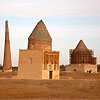 |
Kunya Urgench city Kunya-Urgench. At the beginning of the 1st century AD, Chinese sources mentioned the city of Yue-gan, which has been correlated with the city of Gurgench or Urgench. It relates to Khorezm according to ancient and medieval geographic conceptions. In the later period this city was written about in connection with the most important political events in the region. Kunya-Urgench was destroyed and rebuilt several times... |
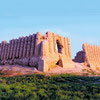 |
Mary city Mary is the second largest city in Turkmenistan and lies about 350 km east of Ashgabat. It is the capital of the Mary Region, known as the province of Margiana in ancient times. Mary (Merv) was once known as the "Pearl of the East" and was the second city of Islam after Baghdad between the 8th-13th centuries; later it fell victim to a most horrific slaughter by the Mongols. Merv changed its name to Mary in 1937 and has grown into Turkmenistan's largest city... |
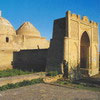 |
Turkmenabat city Turkmenabat is the third largest city in Turkmenistan and the center of the Lebap region. It is situated on the left bank of the Amu Darya River. The city's past has not yet been researched deeply; however, it is known that Turkmenabat appeared in the early 1st century BC, thanks to the Great Silk Road, which was pioneered from China through Central Asia to the Mediterranean in the 3rd century BC. The town of Amul was one of the most important points on the Silk Road. Those who see the Amu Darya River for the first time are surprised at its muddy yellow-green color, owing to its strong flow and mud content, containing various nutrients which form the area's fertile soil... |
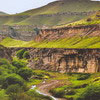 |
Turkmenbashi city Turkmenbashy (formerly called Krasnovodsk), 654km from the capital of Turkmenistan, has a population of about 70,000. It is situated on the Caspian Sea and features some magnificent sandy beaches. More than one hundred twenty years ago, Colonel N.G. Stoletov founded a town, which he named Krasnovodsk. It became the administrative center of the Caspian region and retained that status until 1917... |
According to historians' assessments, the history of civilizations which have existed on this land in the past covers five thousand years. Remains of those vanished cultures can be found here almost everywhere: in the desert and foothills of the mountains, along the channels of dry rivers and in caves. Traces of human activity have been preserved in the form of implements, domestic utensils and real works of art made of stone and bone, ceramics and metals, including bronze, silver and gold.
But it is the architecture which recollects the distant past of the Turkmen - beginning with the earthenware houses, sanctuaries and formerly inaccessible fortresses of the ancient world to the luxurious palaces and temples of the Middles Ages. Certainly, few things which local towns were renowned for have escaped destruction and remain intact today. The Biblical truth that everything is good in its season has been eloquently confirmed here.
